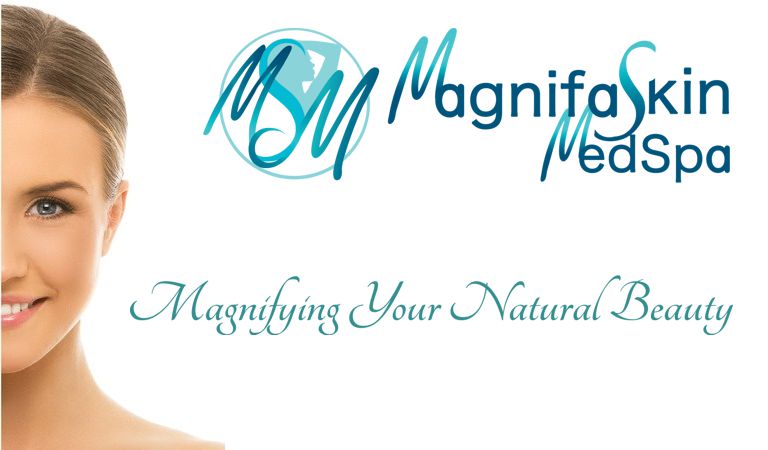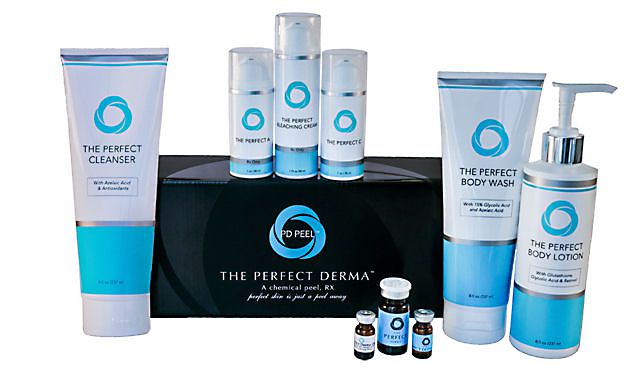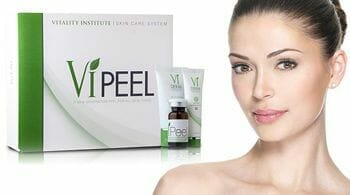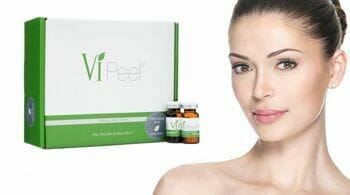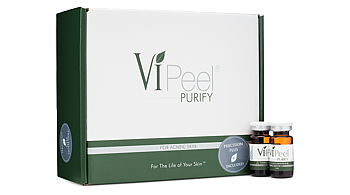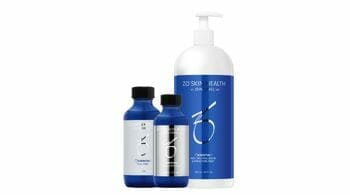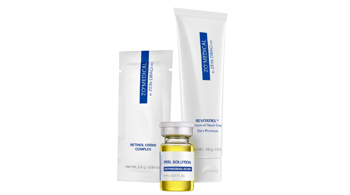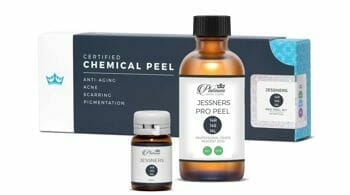Chemical Peels
The Science of Rejuvenation
While the skin on our bodies is largely protected from the ravages of sunlight and other environmental factors, our faces are constantly exposed. This continual wear and tear leads to the build up of aging and dead skin cells which rob your face of its smooth texture and even tone.
A chemical or facial peel can restore your glow, resulting in smoother more youthful skin. Reduce or erase the appearance of fine lines and the ravages of the sun and wind, such as freckles, hyperpigmentation, wind burn and age spots.
At MagnifaSkin MedSpa , we offer a full range of products which literally peel away the damaged outer layers, leaving healthy, new skin in its place. Unlike other more invasive treatments, mild to moderate facial peels are quick and relatively painless with minimal downtime. You will likely experience a few days of redness of your skin, during which time you should avoid exposure to the sun as much as possible. While you should see results after only one treatment, you can expect much more dramatic results with a series of treatments.
The Perfect Derma Peel
Vi Facial Peels
ZO and Jessner Facial Peels


Be the first to know about new Specials, and blog posts with valuable free information on skin care, beauty and wellness. Sign up below and you'll receive an email notice of new specials as well as new posts. You can unsubscribe at any time.


You might remember Samantha's misadventure with a chemical peel from Sex and the City. This was comedy. With a professional chemical peel you can expect some redness, but you won't look like a burn victim.
Some people are a little scared of the idea of a chemical peel. If you were a fan of Sex and the City, you may remember Samantha’s misadventure. Of course, that was television and the side effects were greatly overstated for comic purposes. Nevertheless, you may have the idea that a chemical peel will leave you with beet-red skin for days afterward. This simply isn’t true. Today’s chemical peels, when applied by a professional who has properly assessed your skin type, will likely result in some temporary redness of your skin, but it will be minor and fade within a few days. The type of peel you get: mild, moderate, or deep is also a large factor in appearance and healing following the procedure. More about the different types of peels in next week’s post.
The second reason some people fear a chemical peel is the ‘C’ word. Yes. Chemical. Ewww. Chemicals on your skin! How can that be natural or healthy? But the word ‘chemical’ just means any substance consisting of matter (atoms and molecules) which can’t be broken down except by breaking chemical (molecular) bonds. By this definition, water is a chemical. So, yes, chemicals can be entirely natural and healthy. The word just gets a bad rep from often being used to describe harmful chemicals, without any qualifiers as to what kind of chemicals we’re actually talking about. It probably doesn’t help that chemical peels are sometimes called acid peels. But the ‘acids’ involved are very mild and largely consist of naturally occurring compounds. They are also the active ingredient that make chemical peels work.
So now that we know that chemical peels A) can be entirely natural and healthy, and B) won’t leave us looking like a cooked lobster, what do they actually do? And what is the benefit of a chemical peel over a salon facial?
Chemical Peels: What They Do
Chemical peels can be applied not only to the face but also to the neck and hands. The skin on these areas of our body is constantly exposed to the elements, and as such, more susceptible to aging. Dead skin cells build up in the top layer of our skin as a result of this exposure and cover the healthy glowing skin underneath. A chemical peel completely removes this top layer of skin, which is a mixture of some healthy cells and a large number of dead or dying cells. Once this layer is removed, the baby-fresh healthy skin underneath is revealed.
Any or all of the following benefits may result:
- Reduce fine lines
- Smooth wrinkles
- Improve the appearance of mild scars
- Reduce acne
- Reduce the appearance of age spots, freckles and melasma
- Smoother, plumper skin
- Brighter skin
- A healthy and youthful glow
Where the effects of a salon facial may last up to 72 hours, the benefits of a chemical peel can be seen for up to two months.
Chemical Peels: The Process
A much simpler procedure than a facial, which has up to 8 steps, a chemical peel has only 3, although the results are much more dramatic.
Consultation
An esthetician will examine your skin closely and likely ask you a number of questions about your overall health. This may include your exercise regimen, allergies, daily skin care and any past issues you may have had from skin treatments. You’ll also be advised that if you’ve used Retin-A, Differin or any other product containing tretinoin in the past 7 days a chemical peel may not be advisable. If you use these products, you should stop using them one week prior to your peel.
They will also discuss your goals with you. What do you want to get out of the peel? How long can you afford to take for recovery? How often are you prepared to get repeat treatments? All of these are factors in determining the right peel for you.
Cleansing
A deep exfoliating cleansing will be performed prior to applying the peel. It’s important to remove any traces of makeup, moisturizers, creams, dirt or oils on your skin as these will not only interfere with the effectiveness of the peel, but the chemicals in some of these substances may interact with the peel, with unpredictable results.
The Peel
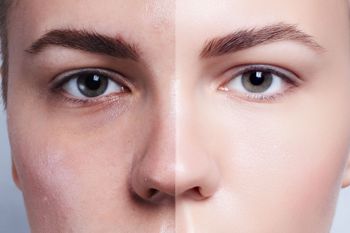
The results of a chemical peel. You can expect smoother skin, reduced appearance of lines, wrinkles, hyperpigmentations and acne as well as brighter skin with a healthy glow.
First, your esthetician will perform a spot test. A small amount of the peel will be applied to your forearm or on the side of your neck just below your ear, at the hairline. The solution will be left on for a minute or two to be sure you are not allergic.
After applying a protectant around your eyes and lips, the peel will be applied with a Q-tip-like applicator. Depending upon the peel, multiple layers may be required. The peel chemicals that you are breathing in may make you light-headed for a while but they are not toxic and won’t hurt you. If you do experience any light-headedness you may be advised to drink lots of water and not drive until it passes, which it should within minutes to hours, depending upon how sensitive you are to the chemicals.
With some peels you should expect a burning sensation for the first minute or two but this will quickly fade. The sensation is often compared to getting a sunburn. Your esthetician will use a fan to reduce the sensation of heat. Expect your skin to turn red during this time, but the redness is temporary.
The Healing Process
Day 1 and 2
During the healing process, which, with a medium peel such as Jessner, VI or ZO will take a few days, you should expect to feel your skin gradually tightening before it begins to peel. You may have the weird sensation that you are wearing a tight mask. You will likely be advised to wash your face up to five times per day with a gentle cleanser such as Cetaphil, rather than soap. Expect your skin to be somewhat red during this time (think sunburn, not lobster!) and it may also feel slightly swollen, although likely it will appear normal other than the redness.
Day 3 and Beyond
For most people, you’ll notice your skin beginning to peel about 48 hours after the procedure and by day 4 you should be seeing the top layer peeling and curling in larger sections. It’s very important not to pull the skin off! I know. You’ve all seen photos of skin being peeled off following a chemical peel but this is marketing. Don’t peel! Let it come off on its own. You can trim the dead skin with scissors but be careful not to pull on any parts that are still attached.
Cleaning Up
A facial may be recommended one week following your peel. This will remove any remaining dead skin. By two weeks following your treatment you should expect to have fully healed with visibly younger looking skin.
The Final Result
Expect smoother skin with smaller pores, a healthy glow, reduced appearance of scars, freckles, and other hyperpigmentations. This effect can last for up to two months.

Light, Medium, or Deep?
Everyone’s skin is different. What works for one person may not be the right treatment for another. Similarly, different skin conditions require varying levels of treatment. To address this, chemical peels use different active ingredients and come in three degrees: light, medium and deep.
Light Peels

Light peels are generally done at home, and only remove the very top layer of skin. These peels can be effective for very young skin and can reduce acne and discolorations.
A light peel only affects the very top layer of skin. Typically done as an at-home treatment, these peels commonly use one of two active ingredients.
Glycolic acid is a type of Alpha Hydroxy Acid (AHA). It comes from sugar cane or beets and is a naturally occurring compound. It is commonly used to treat psoriasis, melasma and non-cancerous skin growths called seborrheic keratosis. It is also found in many skin care products, washes, and cleansers. This is due to the very small size of the molecules, which allows glycolic acid to penetrate the cells more easily. Glycolic acid is known to boost collagen production.
In a peel, glycolic acid breaks down the top layer of skin by dissolving sebum and other substances that bind the cells together. Sebum is an oily substance that helps to keep our skin moisturized. When the glycolic acid breaks it down, the cells dry out and die. The affected layer of skin then peels away, leaving behind healthy new skin.
Another type of light peel is the lactic peel. These have been around for literally thousands of years. Derived naturally from milk products, it is one of the mildest forms of peel available.
Any type of light peel may be effective in reducing the appearance of fine lines, wrinkles, scars, and acne. In addition, the boost in collagen production will tighten and tone the skin, and the increased blood flow as the skin heals will help to restore a youthful glow. However, due to the fact that they only affect the very top layer of skin, these peels are most effective for the young. Teenagers suffering from acne may get very good results with a light peel, however as we age deeper peels are required to reveal the healthy skin underneath and to erase signs of aging. For most of us, this means starting medium depth peels in our 20’s if we want to maintain healthy smooth skin for as long as possible.
Medium Peels
These are the peels most often available at salons. Our Jessner, VI and ZO Peels are good examples of medium peels.
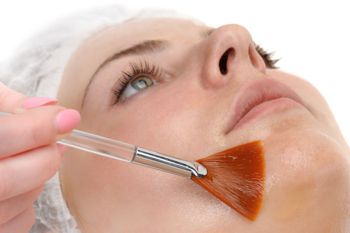
Starting in our mid 20's we should begin having medium depth peels in order to preserve our skin's youthful appearance for as long as possible.
Jessner peels contain a combination of lactic acid, salicylic acid and resorcinol. The lactic acid is the actual exfoliant, but the salicylic acid allows for deeper penetration. Resorcinol is a medical grade antiseptic and makes this peel very effective for acne. Like other medium peels the concentrations of these active ingredients are higher than those found in at-home treatments. This is why peels such as this must be applied at a salon by a trained esthetician. Used properly, they will penetrate deeper and produce far more dramatic results than home treatments. But used improperly they can damage your skin.
VI Peels have a different formula. Salicylic acid is still used for deeper penetration, but TCA (Trichloroacetic Acid) is the active exfoliant, rather than AHA. The primary difference is that TCA peels are more effective for darker skin, where a Jessner peel is recommended for lighter skin types. VI Peels also contain Retin-A and Phenol. Retin-A, or tretinoin, is an effective acne treatment and phenol is the antiseptic used in place of Jessner’s resorcinol.
ZO Peels contain the same ingredients as VI, but in different concentrations and the ZO Medical 3 Step Peel includes the application of a retinol cream after the peel is removed, as well as a calming cream to be applied at home during the healing process.
Which One is Best?
The answer is that one is not better than another. Each type of medium peel is formulated to treat different skin types and conditions. Where a Jessner peel may not produce the desired results in one patient, a VI or ZO peel may have a dramatic impact on the appearance of the skin and vice versa. Your esthetician will analyze your skin type and needs and recommend the peel that is best for you.
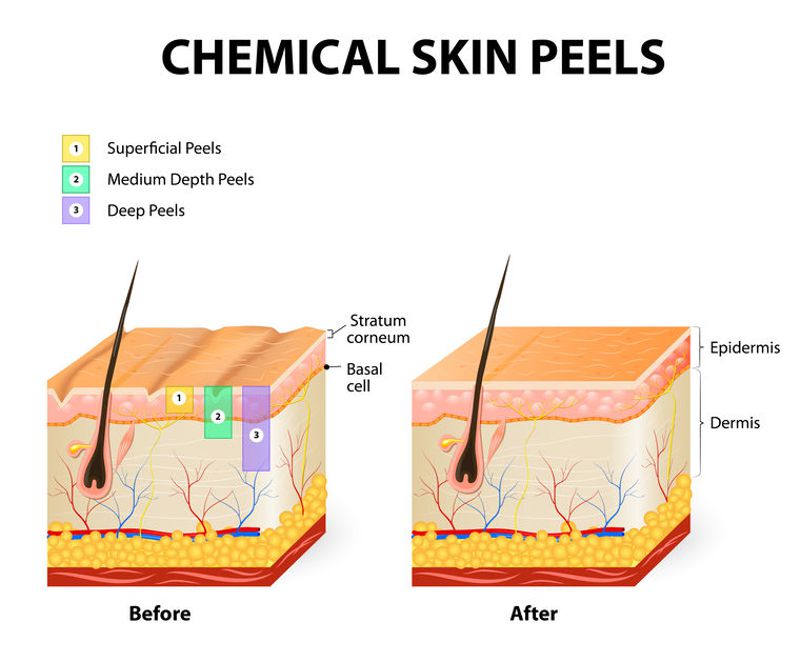
Light, medium and deep chemical peels remove the top layer of skin to different depths. Light peels are generally done at home, medium peels in a salon by a trained esthetician, and deep peels are performed in a hospital or clinic by a doctor or dermatologist.
Deep Peels
While some medium peels do contain light concentrations of phenol, deep peels use it as their primary ingredient. Phenol, also called carbolic acid, is a mild acid derived from petroleum and is more potent as an exfoliant than either AHA or TCA. For this reason, deep peels are usually only done by a physician in a medical facility. While deep peels will produce the most dramatic effects, healing time can be measured in weeks or even months, and there is a much greater risk of scarring and infection. If you are considering a deep peel, you should definitely consult with your physician first to be sure you understand the risks.
At MagnifaSkin, as at most medical spas, we only apply medium peels which safely produce dramatic results with healing times measured in days.

